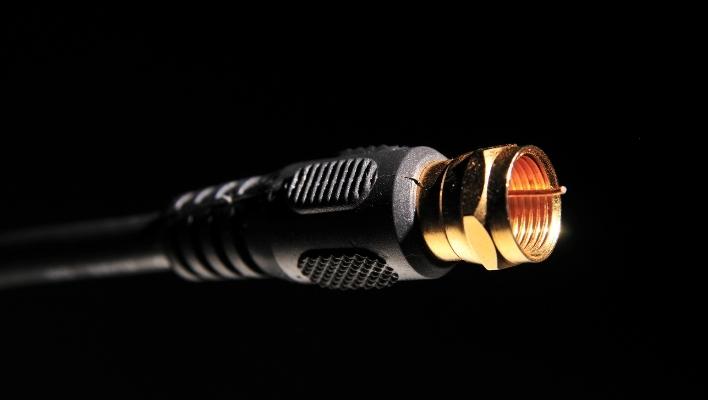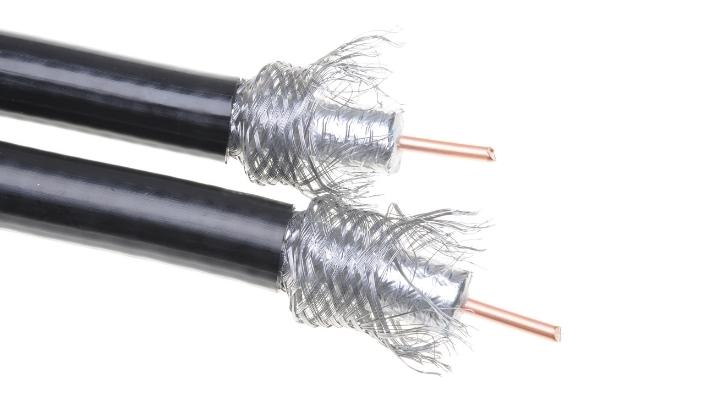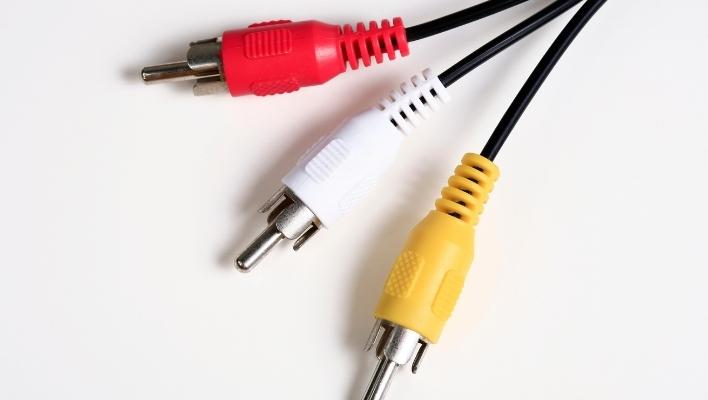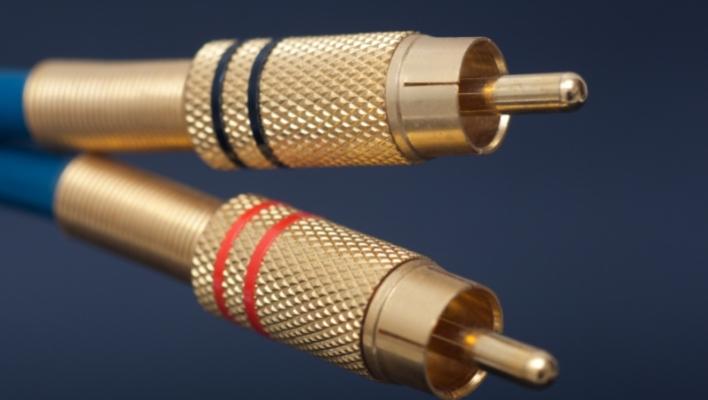Do you desire an outstanding home theater system and are conflicted between the digital coaxial cable vs RCA cable? Well, this is the article for you.
Digital Coaxial Cable and RCA are two of the most popular audio and video cables in use today. Both offer their benefits and disadvantages at different costs, so it can be challenging to choose one over another.
RCA is more commonly used for video connections, whereas digital coaxial is mainly used for audio connections. When it comes to sound quality, the digital coaxial cable is better than RCA.
In this article, we look at how RCA vs coax cables perform from a cost and quality perspective and compare them against each other.

What Is a Digital Coaxial Cable?
A digital coaxial cable is a type of cable that’s used to send digital audio and video signals. It’s much like an RCA cable, except it has thicker insulation and can carry a higher signal quality. This makes it ideal for connecting high-end audio equipment, like a receiver or amplifier.
Digital coaxial cable is a category of cable that carries digital signals over standard copper wires. The term coaxial refers to the fact this type of cable has a center conductor and an outer jacket or sheath. The center conductor is also referred to as the inner conductor or inner shield. The outer jacket or sheath is usually made from plastic but can also be made from aluminum, copper, or other metals.
Digital coaxial cables are used in many applications such as satellite TV, HDTV, video content distribution, and audio/video distribution. These cables often connect devices such as set-top boxes and DVD players to televisions and stereo systems.
Some people also use it to connect their TV to their cable box or satellite receiver. But whatever you use it for, ensure you get the correct type of connector on each end, or you’re not going to get the best results.
Digital Coaxial Cables Features
1. The principal feature of digital coaxial cables is that they have low attenuation and a low insertion loss. These cables are used to transmit data and audio and video signals. They also have a small diameter and a thin wall thickness, making them flexible and easy to install.
2. The most important characteristic of these cables is that they can carry high frequencies without any degradation in performance. The frequency range of these cables ranges from 100 MHz to 3 GHz. This means they can carry signals with very high frequencies without any loss in quality or performance.
3. Another feature of these cables is their resistance to electromagnetic interference (EMI). The EMI resistance means that there will be no breakage in signal transmission due to electromagnetic interference (EMI).
This makes digital coaxial cables ideal for use in areas with interference from other sources. These could be power lines or radio frequency signals interfered by devices such as microwave ovens or wireless routers.
4. Digital coaxial cable is also resistant to moisture, chemicals, and heat because it has thin walls, which make it flexible enough for bending around objects like pipes

Pros and Cons of Digital Coaxial Cables
Pros:
- Digital coaxial cables are more reliable than analog ones. There are no chances of transmitting any interference, thus eliminating the possibility of transmission errors.
- It offers a higher bandwidth transfer than analog coaxial cables. It can support up to 2 channels simultaneously, while the analog cable is limited to one channel at a time.
- It provides superior quality audio compared to other types of cables like twisted pairs or optical cables.
- Digital coaxial cables are used to transmit digital signals. These cables have a more advanced design than analog coaxial cables, which are less expensive and easier to manufacture.
- They also provide excellent protection against EMI (electromagnetic interference), making it possible for the cable to carry signals without interference or loss of quality.
- The outer jacket consists of plastic insulation that prevents water from entering the cable during installation. This increases its durability over time by preventing it from breaking down from exposure to sunlight and other environmental conditions.
- It can be used in various applications such as computer networking, consumer electronics, and home entertainment.
Cons:
- It may not be suitable for long-distance transmission due to its high cost and bulkiness.
- Not as durable as copper cables.
- Expensive due to the need for high-quality materials and construction.
What Is an RCA Cable?
An RCA cable, also known as a red-white-and-yellow cable, is the traditional type of audio cable you use to connect devices like a TV to a sound system.
RCA cables connect the analog video and audio signals from your TV, DVD player, cable box, or other home entertainment device to your home theater system. RCA cable has a male connector on one end and a female connector on the other end. The male connector is usually yellow or white in color, while the female connector is usually red or black.
The red wire in an RCA cable is for the audio signal, the white wire is for the ground, and the yellow wire is for the video signal. RCA cables are usually used to send audio and video signals between devices, but they can also be used to send data signals.
The cable is made out of two conductors, which are separated by an insulating material. This insulating material is made of rubber or plastic, depending on the RCA cable used. The conductors are usually copper or aluminum, but they can also be gold-plated or silver-plated.
The most common types of RCA cables include:
- Mono – One conductor carrying a single audio signal – this connector has one pair of pins for each channel.
- Stereo – Two conductors carrying separate audio signals – this connector has two pairs of pins for each channel.
- Surround Sound – A set of four conductors carrying separate audio signals – this connector has four pairs of pins for each channel.

RCA cables Features
RCA cables have many features that make them more versatile than standard cables with six-pin connectors. These features include:
- Shielded – This feature prevents interference from other electrical devices in your home or office.
- Foil Insulation – This insulation protects against electrical shorts caused by arcing or overheating.
- Polarized Contact – This feature reduces noise and distortion when using high-quality components on low-quality power sources.
- Gold Plated Contacts – This feature ensures that the contacts on your RCA cable are durable and will not corrode over time as cheaper versions might.
Pros and Cons of RCA Cables
Pros:
- These cables are easy to use because they can be disconnected from one another at any time without affecting their performance or functionality.
- They help protect your equipment from damage caused by static electricity build-up from power outlets or other components near it.
- The cables can be connected in any order and will still work correctly with no sound quality or functionality loss.
- RCA plugs provide higher sound quality than other audio cables such as XLR and TRS plugs. This is because they do not have as many components in their construction, leading to better clarity.
- RCA cables are less likely to have a problem with interference than other types of cable.
- RCA cables are a simple, inexpensive way to connect your speakers to your home theater system.
- They provide a reliable way to connect speakers from different brands and price levels.
- They’re also relatively easy to use, and their compact size means you can hide them behind furniture or your TV.
Cons:
- RCA cables aren’t always the best choice for high-quality audio reproduction particularly when it comes to true surround sound systems.
- RCA cables are more expensive than other types of cable.
What is the Difference Between Digital Coaxial and RCA?
So, what’s the difference between the digital coaxial cable vs RCA?
1. Digital coaxial cables connect your TV or sound system to a digital device, such as an amplifier or CD player. The most common use for these cables is connecting an audio system to a television set.
RCA analog cable is the most common cable for audio and video systems and devices. RCA connectors are also used in satellite receivers, DVD players, VCRs, and other consumer electronics equipment.
2. The main difference between the digital coaxial cable and RCA analog cable is that digital coaxial cables have less signal loss than traditional analog cables. At the same time, they can provide higher quality sound when used with an HDTV or receiver.
3. Digital coaxial cables offer better signal quality than traditional analog cables because they are not susceptible to interference caused by electromagnetic waves such as those produced by fluorescent lights or power lines.
4. Digital coaxial cables are made to transfer digital audio signals, while RCA cables transmit analog audio signals. Another difference is that digital coaxial cables are shielded, while RCA cables are not. This means that digital coaxial wires are less likely to pick up interference from other electrical devices.
5. RCA cables are also less expensive than digital coaxial cables, which is why they’re more popular. But if you’re looking for the best possible quality audio, you should use a digital coaxial cable.

Which Is Better?
Might you be wondering: is digital coax the same as RCA, or is coaxial better than RCA?
These questions often come up when people try to decide the best way to connect their audio equipment.
In general, digital coaxial cable is the better option. It offers higher-quality sound and is less susceptible to interference than RCA cables. Plus, it’s easier to use—all you need to do is plug it in, and you’re good to go.
RCA cables are still popular, especially among people on a budget. But if you want the best possible sound quality, go with a digital coaxial cable.

Digital Coaxial Cable vs RCA: How Do I Choose the Right One for Me?
You’re probably wondering how to choose the right one for you. It can be confusing, but don’t worry; we’re here to help.
- RCA cables are the traditional way of connecting audio equipment. They’re affordable and easy to use but not as durable as digital coaxial cables.
- Digital coaxial cables are more expensive, but they’re worth the investment. They offer better sound quality and are more durable than RCA cables. Plus, they’re designed to resist interference, so you’ll get a clear signal every time.
- Digital coaxial is the best choice if you want to stream music wirelessly from your smartphone or tablet to your home entertainment system. It uses less power than RCA cables and can be placed anywhere in your home without special equipment or installation.
Conclusion
We hope this article has helped you understand the difference between digital coaxial cables vs RCA cables and that you’re now able to make an informed decision about which type of cable is best for your needs.
RCA cables are a common type of analog audio cable that’s been used for decades. However, as digital audio has become more popular, many people are looking for a digital coaxial cable to use instead.
In short, digital coaxial is better than RCA because it can deliver a higher audio quality. However, there are some cases where RCA might be a better choice, so it’s essential to understand the differences between the two types of cables.
